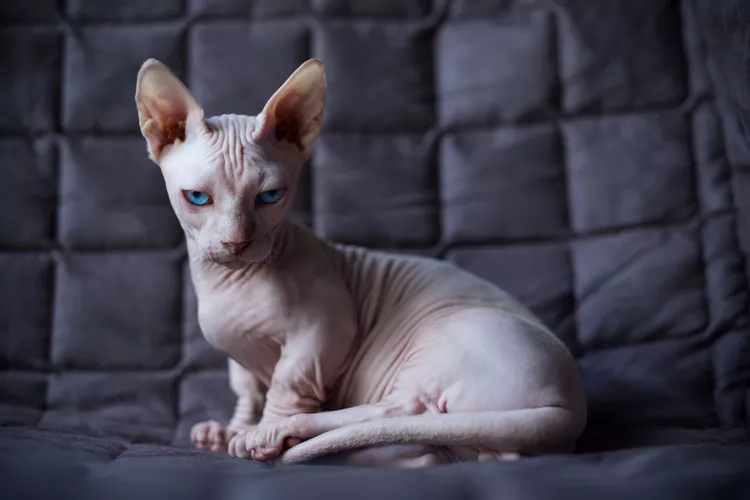
The bambino is a controversial new cat breed that crosses the hairless sphynx with the short-legged munchkin. It is essentially a perfect mix of the two breeds, bearing the general appearance of a sphynx atop its shockingly short legs.
The controversy surrounding this breed stems from the concern that deliberately bred short-limbed cats are vulnerable to health problems and pain due to their anatomical abnormality. In addition, the sphynx breed carries its own set of hereditary issues and is prone to skin damage from the sun. For these reasons, the breed is considered "experimental" and is discouraged by the Cat Fanciers' Association.
Personality: Affectionate, active and playful but not overly energetic
Weight: Up to 9 pounds
Length: Up to 17 inches
Coat Length: Hairless
Coat Colors: Black, white, cream, brown, fawn
Coat Patterns: Solid, pointed, shaded, bicolor
Eye Color: Blue
Lifespan: Up to 12 years
Hypoallergenic: Yes (somewhat)
Origin: United States
The bambino is affectionate and full of character, enjoying the company of its family and reluctant to be alone for very long. This small to medium-sized cat enjoys playing but doesn't need too much exercise. Because it is hairless, the bambino is more vulnerable to injuries than other cats and should be protected from other pets' bites or scratches as well as excessive sun exposure (even through windows), which might burn the bambino's delicate skin.
The bambino breed was launched in 2005 by Stephanie and Pat Osborne, owners of the Holy Moly Cattery in Arkansas, which is no longer in operation. The Osbornes bred sphynx cats, carrying the recessive hairless gene, with munchkin cats that carried the dominant short-legged gene. They called the new breed bambino (the Italian word for "baby").
The International Cat Association (TICA) recognized the bambino as an "experimental" breed in 2006. But, neither the Cat Fanciers' Association (CFA) nor the American Cat Fanciers' Association (ACFA) will allow the breed's registry because they don't want to encourage the propagation of genetic abnormalities for aesthetic reasons.
The intentional breeding of genetically disfigured cats like the short-legged bambino and munchkin is a controversial and divisive practice among cat professionals, veterinarians, and the public. Even so, the bambino appears to be gaining popularity as a "fad" breed.
Some people are attracted to the bambino for its hypoallergenic potential, but no cat is completely hypoallergenic, and the bambino still produces some dander that may irritate sensitive individuals. Surprisingly, the slight "down" of the bambino's coat also needs more care than most people think.
Because they lack a normal absorbent coat, bambinos' skin tends to be oily, making them more susceptible to skin problems like bacterial or fungal infections. Regular bathing and gentle wipes with a moist cloth will help keep their skin and downy coat clean.
Despite their short legs, bambinos are known for being energetic and surprisingly agile. They enjoy playing with toys and having other forms of kitty enrichment around their home. Their shorter legs can tire more easily than "normal" cats, so they don't need tons of exercise, but they still like to scratch and climb on low cat trees (jumping from high surfaces is not a good idea and shouldn't be encouraged).
Bambinos are likely to get sunburned outdoors. If you do take your bambino outside, use a vet-approved feline sunscreen (human sunscreen is toxic to pets) or avoid direct sunlight for more than a few minutes. Cold weather is also dangerous for this hairless cat, and their skin can get injured more easily on brambles or sticks. Overall, bambinos are best suited to an indoor lifestyle.
Because the bambino is such a new breed, the extent of its genetic health problems is not yet known. However, it is safe to assume it may be prone to issues that affect both the sphynx and munchkin breeds. These include:
All cats need to be fed a quality diet, and the bambino will be no exception. They are obligate carnivores, and their food needs to be a high-protein one specifically developed for cats. In addition, it's important to offer measured portions at scheduled meal times (twice per day) so that the bambino does not become overweight, which puts extra pressure on the spine and increases the likelihood of developing feline diabetes.
Bambino cats are still rare, so you may encounter waiting lists or need to travel to buy a kitten. Because of the rarity and increasing popularity of the breed, watch out for unscrupulous "backyard" breeders with less-than-ethical practices that seek to take advantage of the market. Kittens from these breeders are more likely to be inbred or carry undocumented health problems.
Some reputable sphynx breeders also specialize in bambinos, so they are a great resource when looking for a bambino kitten.
Bambinos are known for being very playful and affectionate. They love to be surrounded by company and may become depressed if left alone for more than a few hours. They enjoy homes with gentle children and pets, as they are sociable and friendly, but care must be taken to protect bambinos' delicate skin from injury when playing.
Their skin requires more care than the average cat because of its tendency toward oiliness. Otherwise, the bambino is a fairly low-maintenance cat that is well-suited to indoor life.
Playful and affectionate
Minimal dander (somewhat hypoallergenic)
Moderate energy level
Controversial breed due to genetic deformity
Skin is easily injured
Downy coat and skin need regular bathing
If you’re interested in similar breeds, check out:
Otherwise, check out all of our other cat breed profiles.
It is legal to own a bambino cat, but the Cat Fanciers' Association (CFA) discourages ownership and breeding because it is unethical to propagate genetic characteristics (short legs and hairlessness) that impair a cat's ability to function naturally.
These cats have relatively low activity levels and like to cuddle, so being held is just fine—as long as care is taken not to scratch their tender skin.
A bambino kitten from a reputable breeder can cost between $1,800 and $3,000 due to the breed's new status and rarity.
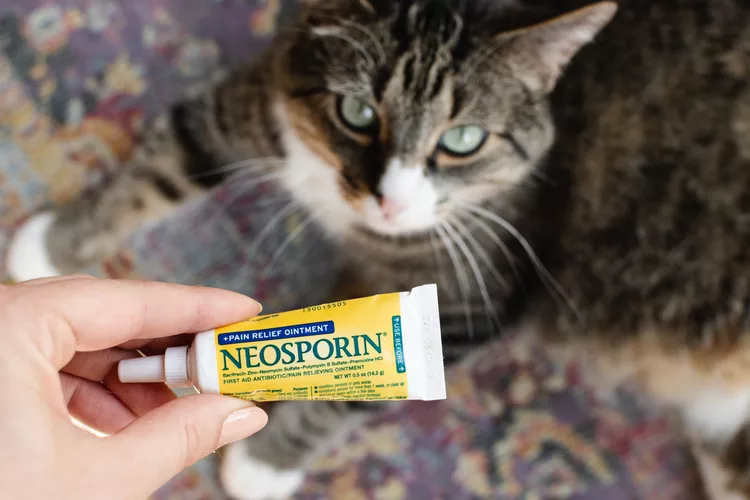
Is Neosporin Safe for Cats?
A brief summary of concerns a cat owner should be aware of before putting Neosporin on their cat, plus tips for things they can use at home instead.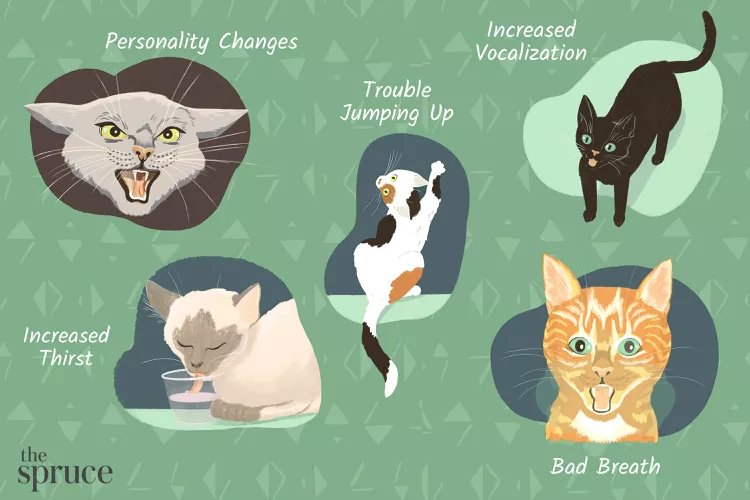
18 Warning Signs That Your Cat Is Crying for Help
How can you tell if your cat is sick? Learn about the warning signs indicating your cat is crying for help and find out what to do about them.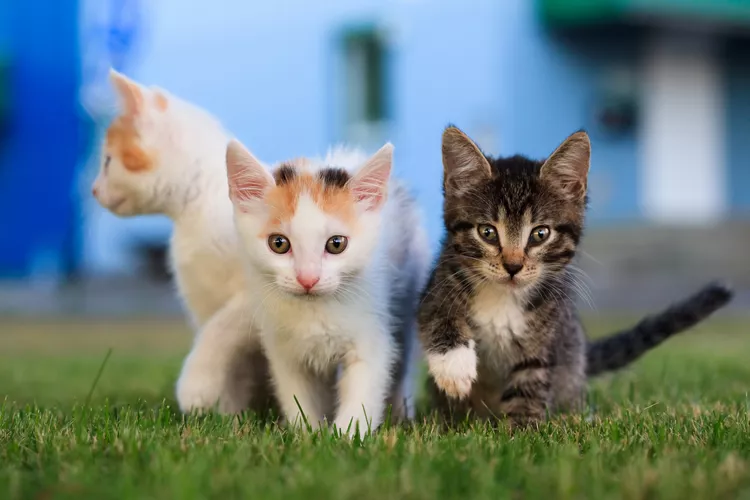
Chlamydia in Cats
Chlamydia in cats is a bacterial infection primarily affecting the eyes, which can cause conjunctivitis. Learn the causes, treatment, and prevention.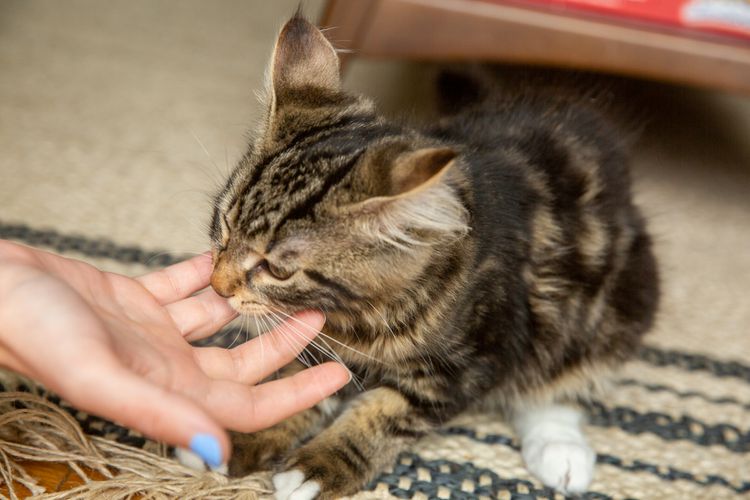
Why Does My Kitten Bite Me? How to Stop Biting and Scratching in Kittens
Why does your kitten bite you? Play aggression is often the cause, but there may be other reasons for the scratching and biting. Here’s what to do if your cat bites and scratches you, including how to stop it.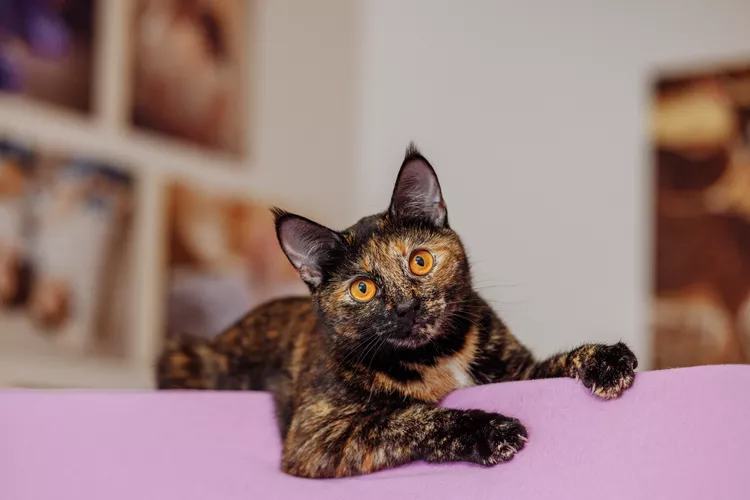
200 Tortoiseshell Cat Names for Your Bi-Colored Kitty
Tortoiseshell cats are a rare phenomenon and deserve a fitting name. We've pulled together 200 tortoiseshell cat names, including male names, female names, cute names, and names inspired by their coat color and pattern.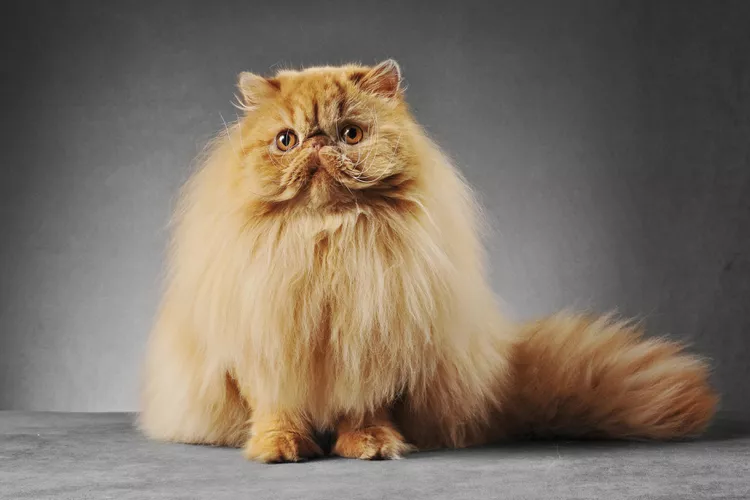
12 Fluffy Cat Breeds Perfect for Endless Cuddles
If you like long-haired cats and don't mind daily (or almost daily) brushing, you’ll love these fluffy cat breeds.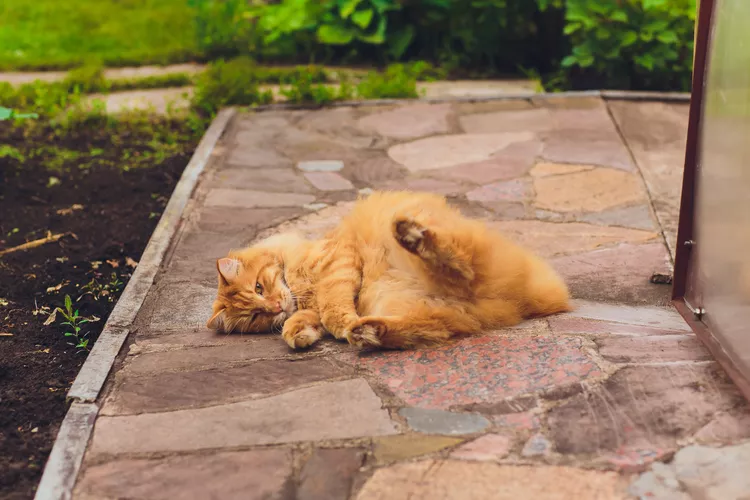
10 Unique Bobtail Cat Breeds
Bobtail cat breeds, including the Manx and Cymric, result from natural genetic mutations. Learn whether one of these cats is right for you.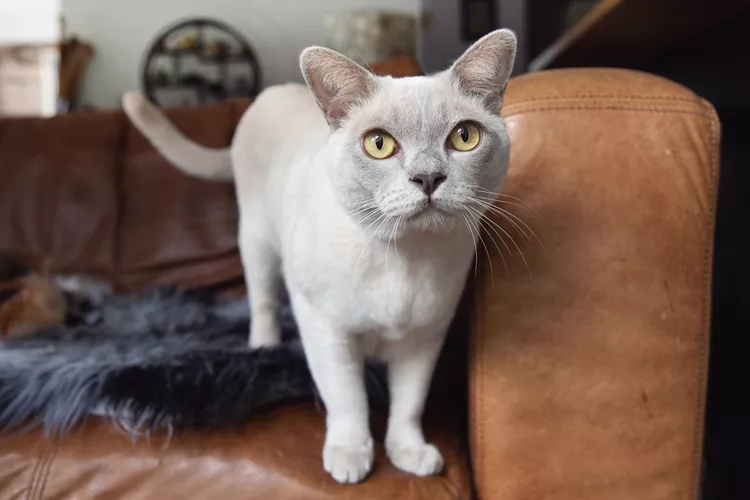
Burmese: Cat Breed Profile, Characteristics & Care
Known for their loving personality and muscular body, the Burmese loves to cuddle after a bout of kittenish playing. Learn about the Burmese breed.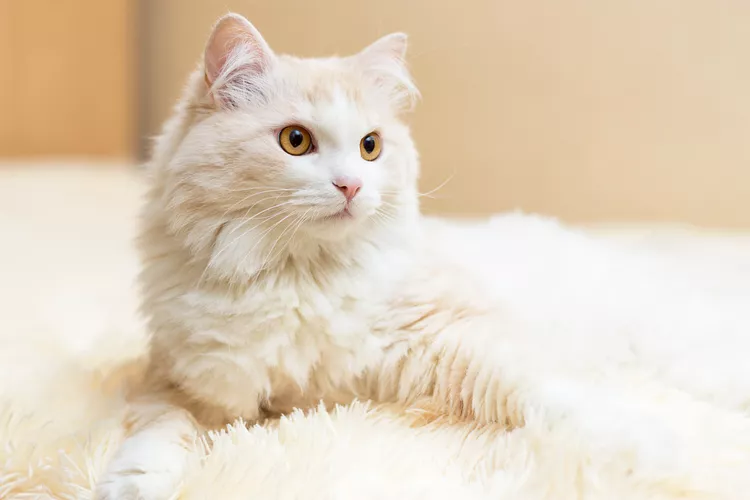
Turkish Angora: Cat Breed Profile, Characteristics & Care
The elegant and silky Turkish Angora cat is a playful, affectionate, and sometimes mischievous pet. Learn about the Turkish Angora breed.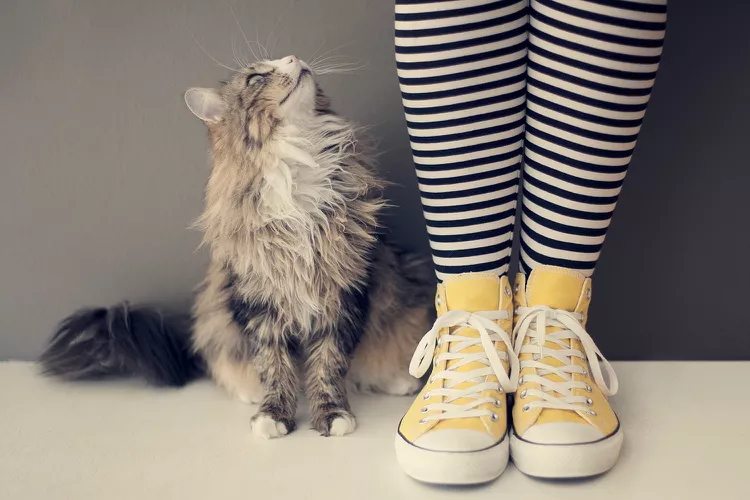
Why Does My Cat Follow Me Around Everywhere?
Cats can follow their owners around for a few different reasons. Find out what your cat is trying to tell you if they follow you around.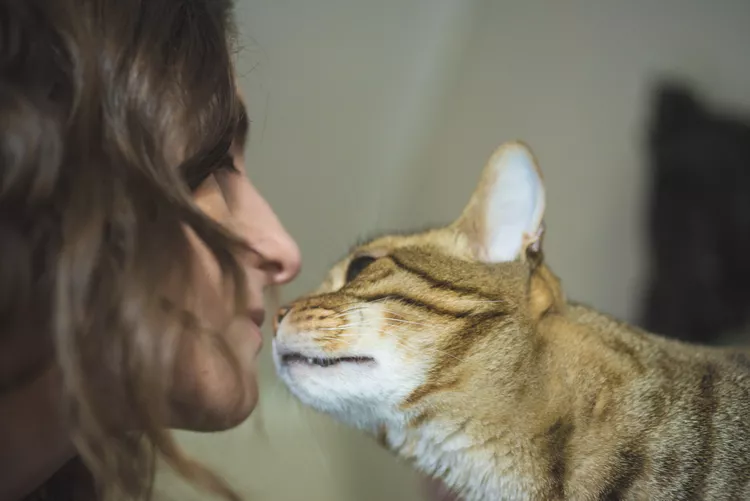
Why Does My Cat Bite My Chin?
If your cat is biting your chin, this might be a sign of affection, but it can also be caused by boredom or stress. Learn how to curb the behavior.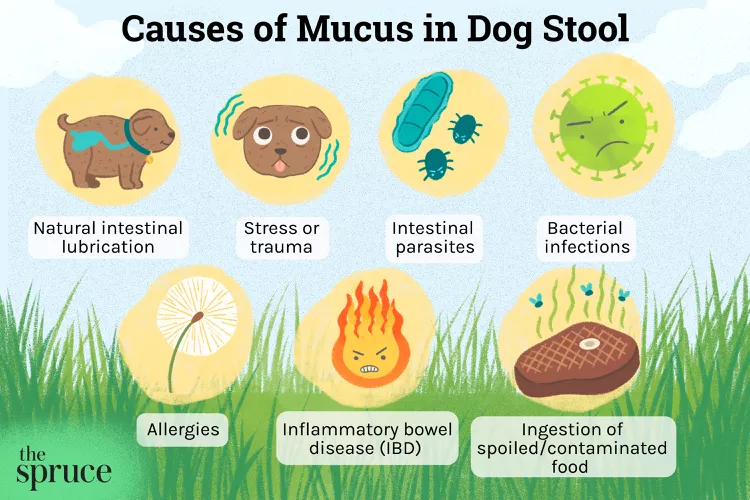
Common Causes of Mucus in Dog Poop
Seeing mucus in your dog's poop can be concerning to a dog owner. Here are common causes and treatment of mucus in a dog's stool.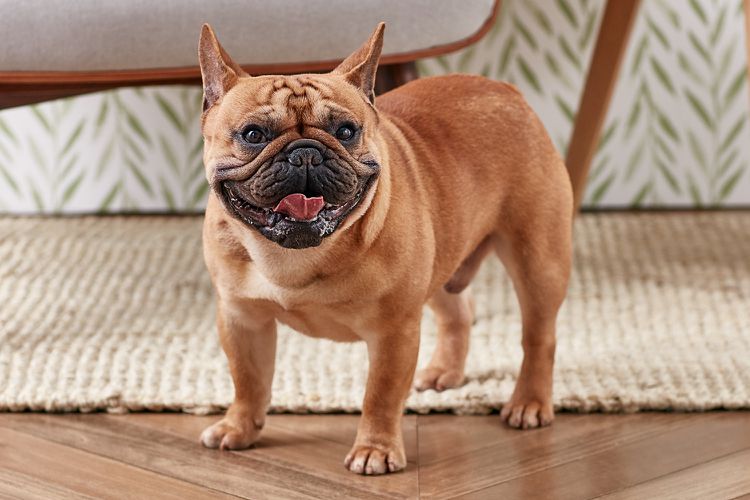
Why Do Dogs Pant?
Dogs pant for a number of reasons, including cooling, excitement, and play. But sometimes panting is a sign of a physical problem. Learn why dogs pant and what to do about it. Here’s how to tell if your dog’s panting is normal or a sign of a problem.
Intervertebral Disc Disease (IVDD) in Dogs
Intervertebral disc disease (IVDD), or a herniated disc, is a serious condition of the spinal cord. Learn the causes, treatment, and prevention.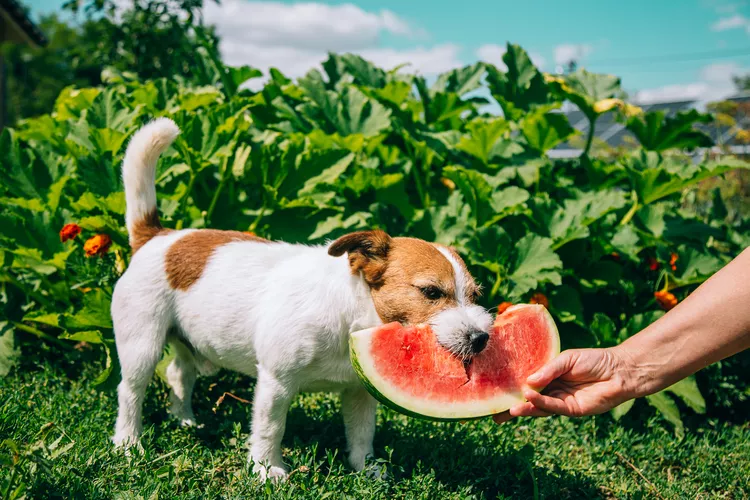
Can Dogs Eat Watermelon?
Can dogs eat watermelon? Yes! But its important to keep certain precautions in mind. Learn the benefits, risks, and how to safely feed your dog this fruit.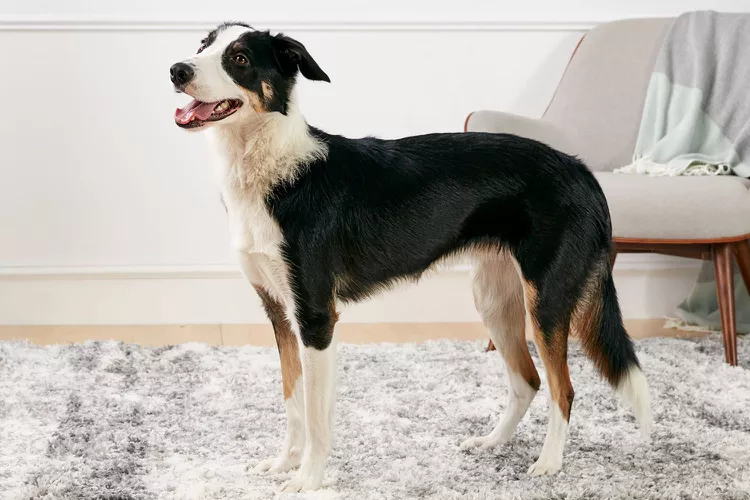
Border Collie: Dog Breed Characteristics & Care
Learn about the border collie, a popular herding breed. They're a smart and energetic dog that's also a great companion to the right pet parent.
Beagle: Dog Breed Characteristics & Care
Learn about the beagle, one of the most popular dog breeds in the world. They are known for being a cheerful, comical, loud, and energetic family dog.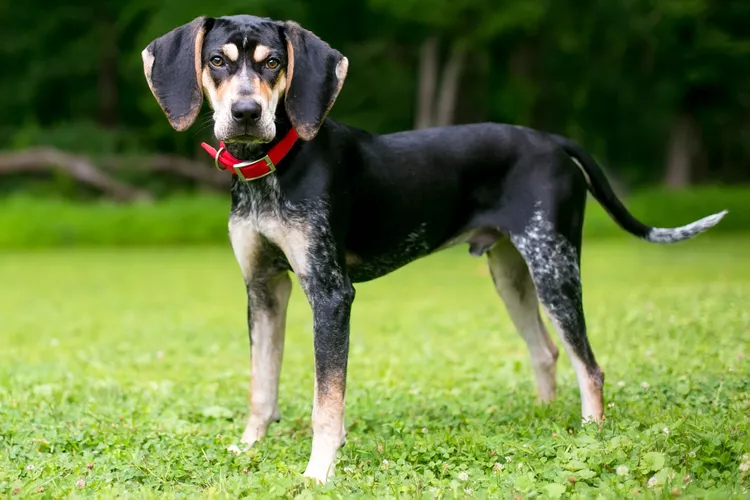
Bluetick Coonhound: Dog Breed Characteristics & Care
Bluetick Coonhounds are a medium-size hound that are gentle and affectionate. They are commonly used as a raccoon hunting dog.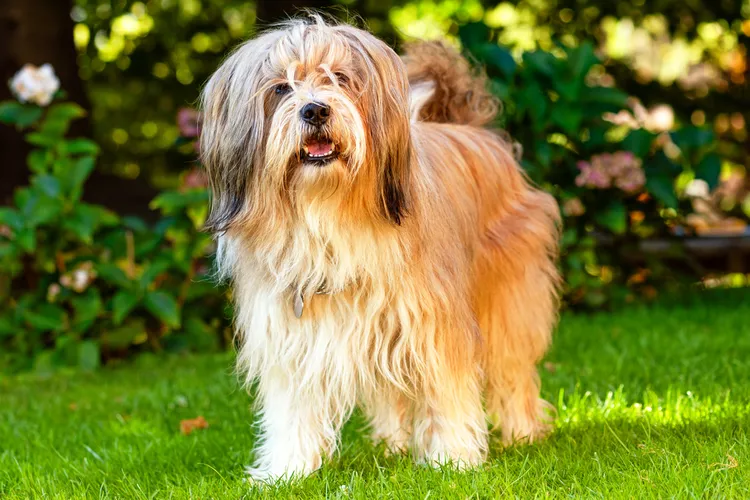
Tibetan Terrier: Dog Breed Characteristics & Care
The Tibetan terrier is a happy-go-lucky dog with a shaggy coat. Learn more about the history, care tips, and other helpful information about the breed.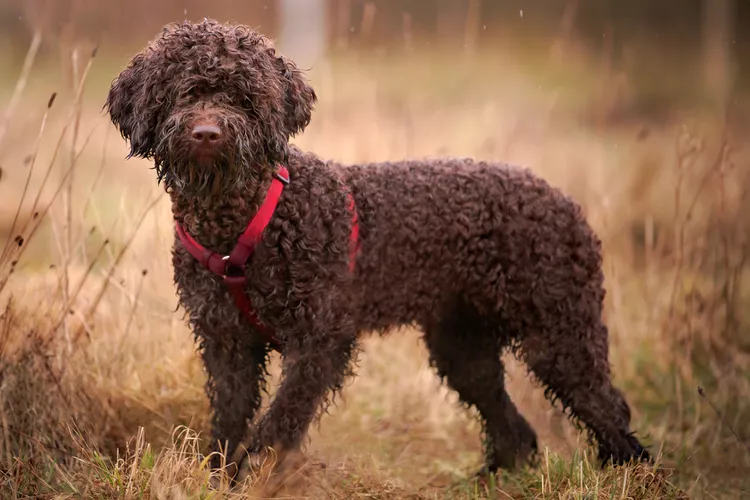
Lagotto Romagnolo: Dog Breed Characteristics & Care
The Lagotto Romagnolo is an intelligent working breed from Northern Italy and can be an adaptable and laid back companion breed.